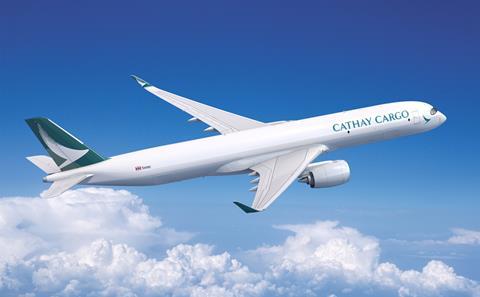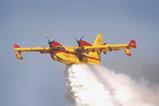Airbus is ramping up development activity on its A350 freighter as the airframer works towards final assembly and first flight milestones in 2025.
“We are really in that industrialisation process now,” says Crawford Hamilton, Airbus head of freighter marketing. “We have got parts heading towards sections and we are ready to start final assembly next year [with] first flight in 2025.”

Parts currently produced include the lower fuselage skin and wing-box feet, he told reporters at the Singapore air show on 20 February.
In addition, around 30 “large test rigs” have been commissioned to assess individual systems and components, including the environmental control system and cargo loading system (CLS) controls.
A further ground-test rig for the CLS itself will be built at Airbus’s California-based supplier, alongside another example inside a “full contoured” shell, dubbed “Cargo One”, at the airframer’s Hamburg plant, says Hamilton.
Based around a new design, although incorporating existing components, the powered CLS will then be tested aboard the programme’s two development aircraft, he adds.
Launched in July 2021, the A350F is expected to enter service in 2026. It will be capable of flying 4,700nm (8,700km) with a payload of 109t, or 4,550nm with a maximum 111t load on board.
A five-frame, 3.2m (125in) shrink of the A350-1000 passenger aircraft, and using the same Rolls-Royce Trent XWB-97 engines, the new freighter features what Airbus claims is the largest main deck cargo door in the industry – 15% wider than the competition – and a segregated fresh air crew area.
To date, the twinjet – officially designated the A350-1000F – has gained 50 orders from nine identified airlines and lessors, plus one undisclosed customer.
Included in that total are Asia-Pacific carriers Cathay Pacific (six) and Singapore Airlines (seven) and Airbus forecasts a requirement for 145 large widebody freighters in the region in the period to 2042.
But Airbus does not have the market to itself: Boeing is also developing a new freighter based on its developmental 777-8 widebody, which has so far accumulated 55 orders from carriers such as Qatar Airways, Cargolux and All Nippon Airways.
Meanwhile, despite its poor sales record over the years, registering just 38 orders, Airbus continues to offer the older-generation A330-200 freighter to customers.
But how much longer remains for the twinjet is up for debate, says Hamilton: “I think that the fact that it’s a [current engine option] its time is probably drawing to a close in terms of building new ones.”
Instead, he thinks, A330 passenger to freighter conversions will prove increasingly popular for that segment of the market “with a much lower capital cost”.


































